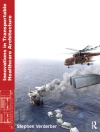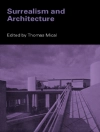For a long time, urban agriculture initiatives have been explored and novel policy and planning practices have been investigated. With the global food crisis the role urban agriculture has to play becomes more and more urgent. The potentials are large: it brings social justice, it limits climate change, it provides a healthy urban condition, it stimulates biodiversity and gives disadvantaged people an economic opportunity. After 15 years in the making, the time is ripe to see whether the growing of food has established a prominent position in urban planning and policies, food productivity, safety and security, social well-being, the arts, and human health. In this volume several aspects of growing food in the city are explored. Urban Agriculture plays a significant role in society. Nevertheless, it did not become a mainstream topic in day-to-day practice. This book provides concrete solutions and clues how to give urban food production a crucial role in the future planning of urbanenvironments.
Tabela de Conteúdo
Chapter 1 From food as commodity to food as community( Rob Roggema).- Chapter 2 Spatial evolutions (Rob Roggema).- Chapter 3 Finding space for urban productivity(Rob Roggema).- Chapter 4 Food Space (Rob Roggema).- Chapter 5 Productive synergies in growing food(Greg Keeffe).- Chapter 6 Symbiotic peri-urban agricultural interfaces:Applying biophilic design principles to facilitate peri-urban agricultural areas into ecology, foodscape, and metropolitan transition ( Fudai Yang, Arjan van Timmeren, Nico Tillie).- Chapter 7. Moises Gerardo Contreras Ruiz Esparza, Christina Anne Boyes (Aleksandra Krstikj, ).- Chapter 8 The foodscape of Belfast, NI( Sean Cullen).- Chapter 9 Migrant edible gardens(: Mirjana Lozanovska and Ha Minh Hai Thai).- Chapter 10 The Food Roof: growing food in favelas( Rob Roggema).- Chapter 11 Super Market Garden(Emma Campbell).- Chapter 12 Design productive urban landscapes(Minke Muler, Claire Oude Aarninkhof).- Chapter 13 Pre- and post-pandemic view of meshing street art, industry architecture, urban design and the imperative of green spaces in a corporate world( Ann Mc Culloch, Alexander Mc Culloch).- Chapter 14 Lutkemeer-polder: an agroecological rurban Voedselpark(Rob Roggema and Jeffrey Spangenberg).- Chapter 15 Way forward(Rob Roggema).
Sobre o autor
Prof. dr. ir. Rob Roggema is Distinguished Professor of Regenerative Culture at Tecnológico de Monterrey, Monterrey, Mexico, and director/founder of Cittaideale, office for adaptive design and planning. He is a visiting professor at Queens University Belfast and lead-author of the Architecture, Urban Design and Planning chapter of the third assessment report of the UCCRN. He is a Landscape Architect and an internationally renowned design-expert on sustainable urbanism, climate adaptation, energy landscapes and urban agriculture. He held several professorship positions, most recently at Hanze University of Applied Sciences (Professor Sustainable Spatial Transformations) and the University of Technology Sydney (Professor of Sustainable Urban Environments). He has written multiple books on climate adaptation and design, Urban Agriculture, Sustainable Buildings and Cities, Design Charrettes, Rio’s Food Roofs and Design for Recovery in Japan, and is series editor of ‘Contemporary Urban Design Thinking’ (Springer). Rob lead the climate adaptive design 2021 team for the Groningen region (‘Moeder Zernike’), initiated the FEW-nexus project ‘the Moveable Nexus’ (SUGI/JPI-Europe), and designed the Edible Park in Ede, the Netherlands. He leads the design team of ‘Nature-Rich Netherlands’ and is the lead-landscape architect of Greening NEOM development. He developed the Swarm Planning concept, a dynamic way of planning the city for future adaptation to climate change impacts and has designed and led over 30 design charrettes around the world, involving communities, academics, governments, and industries in design processes for more resilient communities.












